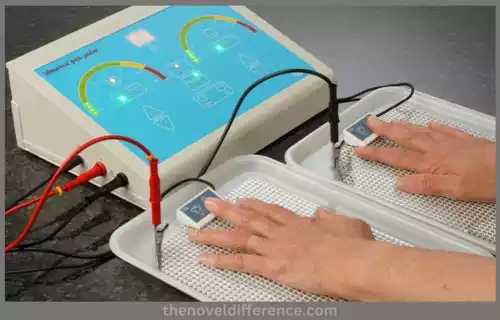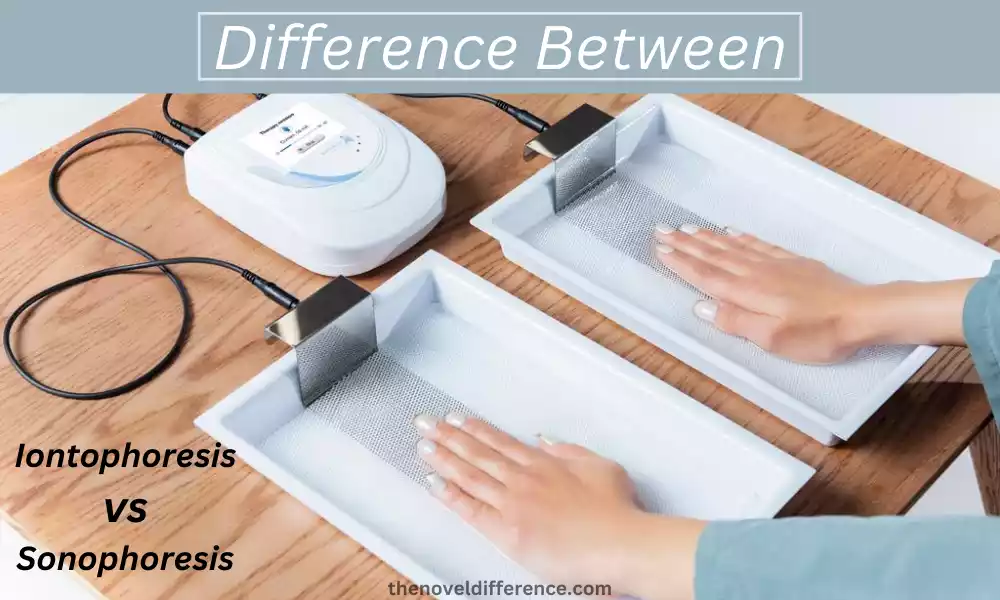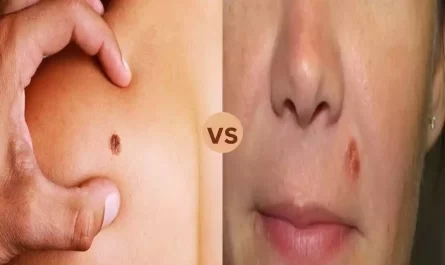Iontophoresis
Iontophoresis is a technique used in transdermal drug delivery that involves the application of a small electric current to facilitate the penetration of charged drug molecules through the skin. It is based on the principles of electron repulsion and electroosmosis.
During iontophoresis, two electrodes are placed on the skin’s surface: the active electrode (anode) and the dispersive electrode (cathode). The drug formulation, typically in the form of a gel or solution, is applied to the skin under the active electrode. When the electric current is applied, it creates an electric field that drives the movement of charged drug molecules.

The electric current promotes drug penetration through two main mechanisms:
- Electrorepulsion: Charged drug molecules, depending on their polarity, are either attracted or repelled by the electric field. For example, positively charged drugs (cations) are driven toward the negatively charged electrode (cathode), while negatively charged drugs (anions) are directed toward the positively charged electrode (anode). This electron repulsion helps to transport the drug across the skin.
- Electroosmosis: The electric field also induces electroosmotic flow, which is the movement of solvent (usually water) in the skin’s interstitial spaces. This electroosmotic flow carries the drug molecules along with it, facilitating their penetration through the skin.
Iontophoresis has several advantages in transdermal drug delivery. It allows for controlled and targeted drug delivery to specific areas of the body, minimizing systemic side effects.
The technique can enhance drug penetration, especially for charged drugs that have difficulty crossing the skin barrier. Iontophoresis applies to both ionic and non-ionic drugs, broadening its range of potential therapeutic applications.
Iontophoresis has found various applications in healthcare. It is commonly used for the treatment of hyperhidrosis (excessive sweating), where the electric current helps deliver medications that reduce sweat production.
Iontophoresis is also utilized in localized pain management, delivering analgesics or anti-inflammatory drugs directly to the affected area. Additionally, iontophoresis has been employed in delivering specific medications, such as corticosteroids, to treat dermatological conditions.
However, it is worth noting that iontophoresis has some limitations and considerations. Skin irritation or burns may occur if the electric current is too high or applied too long.
Careful electrode placement and monitoring of the treatment duration are essential to ensure patient safety. Additionally, not all drugs are suitable for iontophoresis, as their physicochemical properties and charge may affect their ability to be transported effectively through this method.
Iontophoresis is an important technique in transdermal drug delivery, offering targeted and controlled drug delivery through the application of an electric current. It has proven utility in various medical applications and continues to be an area of active research and development.
Sonophoresis
Sonophoresis is a technique used in transdermal drug delivery that utilizes ultrasound waves to enhance the penetration of drugs through the skin. It is based on the principles of acoustic cavitation and microstreaming.
During sonophoresis, a device called a sonophoretic device or transducer is used to generate high-frequency ultrasound waves. These waves are applied to the skin along with a coupling agent, typically a gel or liquid, which helps transmit the ultrasound energy to the skin.

The ultrasound waves create mechanical vibrations and oscillations in the skin, resulting in two key effects:
- Acoustic Cavitation: The ultrasound waves cause the formation and collapse of tiny gas bubbles in the skin’s layers. This phenomenon is known as acoustic cavitation. The rapid expansion and collapse of these bubbles create microjets and shockwaves, leading to localized disruptions in the skin’s barrier. This temporary disruption allows for enhanced drug penetration.
- Microstreaming: The ultrasound waves induce microstreaming, which is the localized movement of fluid in the skin’s interstitial spaces. Microstreaming generates microcirculation and turbulence, which can increase the diffusion of drugs through the skin and enhance their absorption.
Sonophoresis offers several advantages in transdermal drug delivery. It can improve the penetration of drugs, particularly hydrophilic (water-soluble) drugs that have difficulty crossing the lipophilic (oil-based) barrier of the skin. Sonophoresis is a non-invasive technique that provides controlled and targeted drug delivery, reducing systemic side effects.
Sonophoresis has applications in various healthcare areas. It is commonly used for topical drug delivery, allowing medications to reach deeper layers of the skin for localized treatment.
Sonophoresis has shown promise in wound healing and scar reduction, where it can enhance the delivery of therapeutic agents to promote tissue regeneration. In cosmetic applications, sonophoresis is used for facial rejuvenation, delivering skin-enhancing substances such as antioxidants or hyaluronic acid.
While sonophoresis offers advantages, there are also considerations to keep in mind. The intensity and frequency of ultrasound waves must be carefully controlled to avoid tissue damage, such as excessive heating. The coupling agent used during sonophoresis should be selected appropriately to optimize drug delivery.
Additionally, not all drugs are suitable for sonophoresis, as their molecular properties and size can affect their ability to penetrate the skin effectively using this method.
Sonophoresis is a valuable technique in transdermal drug delivery, using ultrasound waves to enhance drug penetration through the skin.
It provides targeted and controlled drug delivery, with applications in topical treatments, wound healing, and cosmetic procedures. Continued research and development in sonophoresis hold the potential for expanding its use and optimizing drug delivery outcomes.
Importance of Iontophoresis and Sonophoresis
Iontophoresis and sonophoresis are both important techniques in the field of transdermal drug delivery. They offer unique advantages and have applications in various healthcare settings.
Here are the key reasons highlighting the importance of iontophoresis and sonophoresis:
- Enhanced Drug Delivery: Both iontophoresis and sonophoresis help in increasing the penetration of drugs through the skin, allowing for improved drug delivery. This is particularly beneficial when oral administration of drugs is not feasible or effective.
- Non-Invasive Approach: Iontophoresis and sonophoresis provide non-invasive alternatives to traditional methods of drug delivery, such as injections or oral medications. They eliminate the need for needles and can be less painful and more convenient for patients.
- Targeted Drug Delivery: These techniques allow for localized drug delivery to specific areas of the body. By directing the drug to the desired site, iontophoresis and sonophoresis minimize systemic side effects and improve the therapeutic efficacy of the treatment.
- The Versatility of Applications: Iontophoresis and sonophoresis have a wide range of applications in healthcare. They can be used for delivering medications, such as analgesics, anti-inflammatory drugs, corticosteroids, and local anesthetics. They are also employed in treatments for conditions like hyperhidrosis, pain management, wound healing, scar reduction, and cosmetic applications.
- Patient Compliance: These techniques offer benefits in terms of patient compliance and comfort. They are generally well-tolerated and require minimal patient involvement during the treatment. This can improve patient adherence to the therapy, leading to better treatment outcomes.
- Research and Development: Iontophoresis and sonophoresis remain areas of active research and development. Scientists and researchers are exploring new drug formulations, optimizing parameters, and investigating novel applications. This ongoing research contributes to advancements in transdermal drug delivery and expands the possibilities for future medical treatments.
Iontophoresis and sonophoresis play vital roles in improving drug delivery efficiency, expanding treatment options, and enhancing patient comfort. These techniques offer promising opportunities for the development of innovative therapeutic approaches in various healthcare domains.
Comparison between Iontophoresis and Sonophoresis
Iontophoresis and sonophoresis are both techniques used in transdermal drug delivery, but they differ in their mechanism of action and specific applications.
Here is a comparison between iontophoresis and sonophoresis:
Mechanism of Action:
- Iontophoresis: Iontophoresis utilizes an electric current to enhance drug penetration through the skin. The electric field created during iontophoresis facilitates the movement of charged drug molecules by electron repulsion and electroosmosis.
- Sonophoresis: Sonophoresis employs ultrasound waves to increase the permeability of the skin. The mechanical vibrations and microstreaming generated by ultrasound disrupt the skin’s barrier and facilitate drug penetration.
Drug Penetration Pathway:
- Iontophoresis: Iontophoresis is effective for both ionic and non-ionic drugs. Charged drug molecules are transported across the skin via electron repulsion and electroosmosis.
- Sonophoresis: Sonophoresis is particularly suitable for hydrophilic (water-soluble) drugs. The mechanical disruption caused by ultrasound waves allows for enhanced penetration of these drugs through the skin.
Safety Considerations:
- Iontophoresis: Iontophoresis may carry a risk of skin irritation or burns if the electric current is too high or applied for too long. Proper electrode placement and monitoring are necessary to ensure patient safety.
- Sonophoresis: Sonophoresis has a potential risk of tissue heating if the intensity or duration of ultrasound exposure is not controlled. Careful management of ultrasound parameters is important to avoid adverse effects.
Treatment Duration and Frequency:
- Iontophoresis: Iontophoresis typically requires multiple treatment sessions to achieve the desired drug delivery. The duration and frequency of iontophoresis treatments depend on the specific drug and condition being treated.
- Sonophoresis: Sonophoresis generally has a shorter treatment duration and may require fewer sessions compared to iontophoresis. The specific treatment regimen depends on the drug being delivered and the therapeutic goal.
Suitability for Different Drug Types:
- Iontophoresis: Iontophoresis is suitable for a wide range of drug types, including both ionic and non-ionic drugs. The charge of the drug molecule influences its transport during iontophoresis.
- Sonophoresis: Sonophoresis is particularly effective for hydrophilic drugs, which have difficulty penetrating the skin’s lipophilic barrier. The size and molecular properties of the drug can also impact its delivery via sonophoresis.
Advantages and Limitations:
- Iontophoresis: Iontophoresis offers controlled and targeted drug delivery, applies to various drug types, and has a wide range of clinical applications. However, skin irritation and the need for multiple treatment sessions can be limitations.
- Sonophoresis: Sonophoresis enhances drug penetration, particularly for hydrophilic drugs, and provides a non-invasive approach. It has applications in topical drug delivery, wound healing, and cosmetic procedures. However, careful management of ultrasound parameters and limited suitability for lipophilic drugs are considerations.
While both iontophoresis and sonophoresis are valuable techniques in transdermal drug delivery, they differ in their mechanisms of action, drug penetration pathways, safety considerations, treatment duration, and suitability for different drug types.
The choice between the two techniques depends on the specific drug being delivered, the therapeutic goal, and the patient’s individual needs and characteristics.
A brief overview of transdermal drug delivery Methods
Here is a brief overview of some commonly used transdermal drug delivery methods:
- Transdermal Patches: Transdermal patches are one of the most well-known and widely used transdermal drug delivery systems. They consist of a drug reservoir embedded in an adhesive matrix, which is applied to the skin. The drug is released slowly and steadily through the skin into the bloodstream over a specified period. Transdermal patches are convenient, easy to use, and provide a continuous drug supply.
- Iontophoresis: Iontophoresis involves the application of a low-level electric current to facilitate the delivery of charged drug molecules through the skin. The current helps to overcome the skin’s natural barrier and enhance drug penetration. Iontophoresis is commonly used for localized drug delivery and has applications in areas such as pain management and treatment of hyperhidrosis (excessive sweating).
- Sonophoresis: Sonophoresis utilizes ultrasound waves to increase the permeability of the skin and enhance drug delivery. The ultrasound waves create micro-vibrations and microstreaming in the skin, which disrupts the skin’s barrier and allows for improved drug penetration. Sonophoresis is particularly effective for hydrophilic drugs and has applications in various fields, including topical drug delivery, wound healing, and cosmetic treatments.
- Microneedle Systems: Microneedles are tiny needles, usually smaller than a millimeter in length, that create micropores in the skin. These micropores enable the delivery of drugs through the skin’s outer layer, the stratum corneum. Microneedle systems can be in the form of patches, rollers, or arrays and offer the advantage of painless drug delivery and improved drug absorption.
- Electroporation: Electroporation involves the application of short, high-voltage electric pulses to the skin, which temporarily increases the permeability of the skin’s lipid bilayers. This technique allows for enhanced drug delivery by creating transient aqueous pathways through which drugs can pass. Electroporation is used for both localized and systemic drug delivery and has shown promise in various applications, including cancer therapy and DNA vaccination.
What are the Similarities Between Iontophoresis and Sonophoresis?
Iontophoresis and sonophoresis are two distinct techniques used in transdermal drug delivery, but they also share some similarities.
Here are a few similarities between iontophoresis and sonophoresis:
- Enhanced Drug Delivery: Both iontophoresis and sonophoresis aim to enhance drug penetration through the skin. They provide mechanisms to overcome the skin’s natural barrier and facilitate the delivery of drugs into the underlying tissues.
- Non-Invasive Approach: Both techniques offer non-invasive alternatives to traditional routes of drug administration, such as injections or oral medications. They eliminate the need for needles or invasive procedures, making them more patient-friendly and comfortable.
- Transdermal Route: Both iontophoresis and sonophoresis deliver drugs through the skin, enabling systemic drug distribution. This transdermal route of drug delivery bypasses the gastrointestinal tract and avoids first-pass metabolism, leading to improved bioavailability and reduced gastrointestinal side effects.
- Controlled Drug Delivery: Both techniques allow for controlled drug delivery. They provide a means to regulate the rate and extent of drug release, ensuring a steady and calm supply of medication over a specific period.
- Targeted Delivery: Both iontophoresis and sonophoresis can be used to achieve localized drug delivery to specific areas of the body. They enable the targeted administration of medications, reducing systemic exposure and minimizing side effects in non-target tissues.
- Therapeutic Applications: Both techniques have various therapeutic applications in healthcare. They can be used for delivering medications, such as analgesics, anti-inflammatory drugs, corticosteroids, and local anesthetics. Both iontophoresis and sonophoresis are utilized in treatments for conditions like pain management, wound healing, scar reduction, and cosmetic applications.
While iontophoresis and sonophoresis have differences in their mechanisms of action and specific applications, these similarities highlight their common goal of enhancing transdermal drug delivery and providing non-invasive and controlled drug administration options.
Iontophoresis vs Sonophoresis in Tabular Form
Certainly! Here’s a comparison of iontophoresis and sonophoresis in tabular form:
| Feature | Iontophoresis | Sonophoresis |
| Mechanism | Application of electric current | Utilization of ultrasound waves |
| Drug Penetration | Charged drug molecules | Hydrophilic drugs |
| Pathway | Electrorepulsion, electroosmosis | Acoustic cavitation, microstreaming |
| Safety Considerations | Risk of skin irritation or burns | Risk of tissue heating if not controlled |
| Treatment Duration | Multiple sessions may be required | Shorter treatment duration, fewer sessions |
| Suitability for Different Drug Types | Ionic and non-ionic drugs | Hydrophilic drugs |
| Advantages | Controlled and targeted delivery | Non-invasive, enhanced penetration |
| Limitations | Potential skin irritation, multiple sessions | Risk of tissue heating, limited suitability |
Please note that this table provides a general overview and that specific details may vary depending on the context and individual circumstances.
Conclusion
Both iontophoresis and sonophoresis are valuable techniques in transdermal drug delivery, although they differ in their mechanisms of action and specific applications.
Iontophoresis utilizes an electric current to enhance drug penetration through the skin. It is effective for both ionic and non-ionic drugs, providing controlled and targeted drug delivery.
Iontophoresis has applications in various areas, such as the treatment of hyperhidrosis and localized pain management. However, it may carry a risk of skin irritation or burns if not properly administered.
Sonophoresis, on the other hand, utilizes ultrasound waves to increase the permeability of the skin. It is particularly suitable for hydrophilic drugs and offers a non-invasive approach to drug delivery.
Sonophoresis has applications in topical drug delivery, wound healing, and cosmetic procedures. However, careful management of ultrasound parameters is essential to avoid tissue heating.




